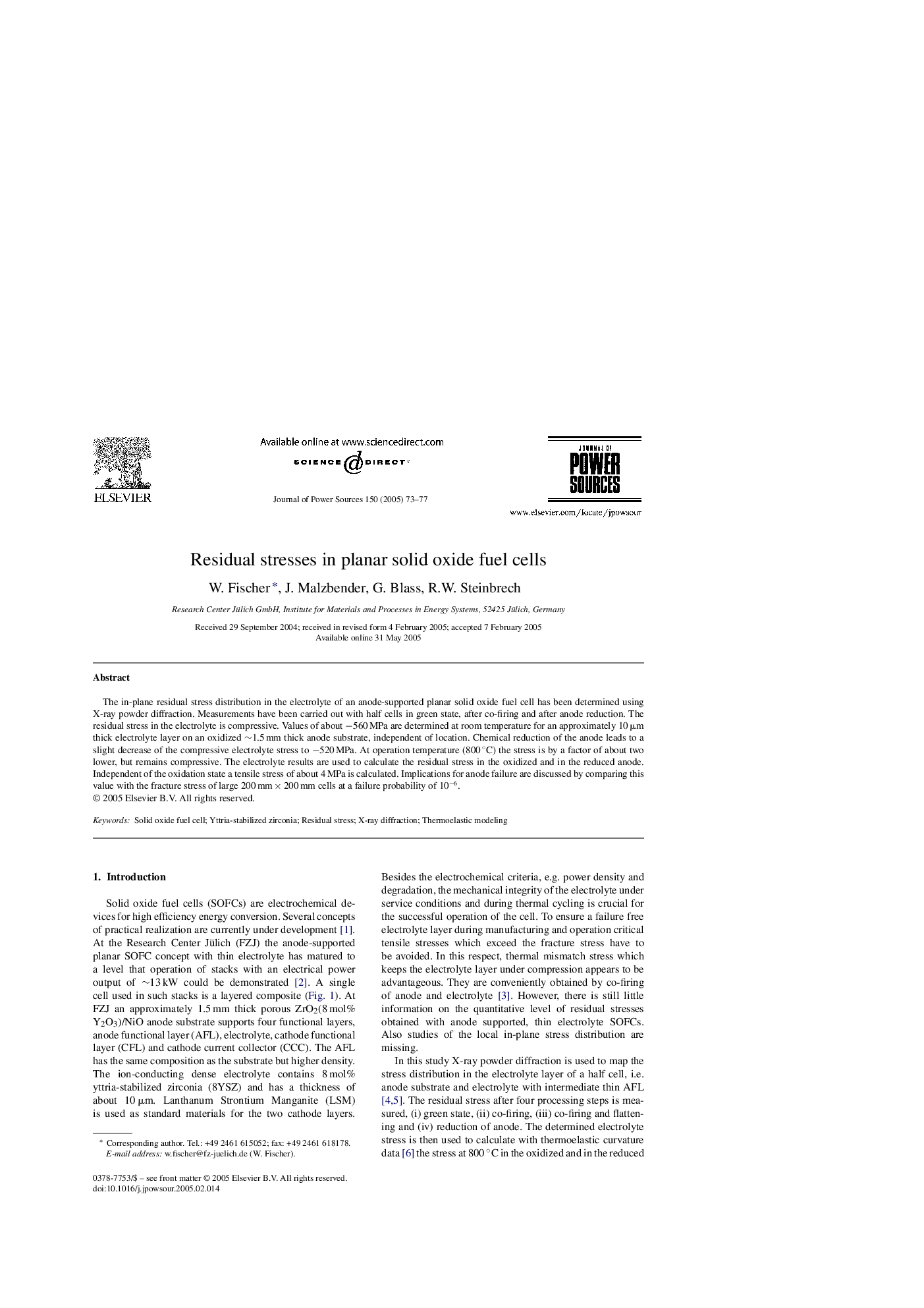| Article ID | Journal | Published Year | Pages | File Type |
|---|---|---|---|---|
| 9760172 | Journal of Power Sources | 2005 | 5 Pages |
Abstract
The in-plane residual stress distribution in the electrolyte of an anode-supported planar solid oxide fuel cell has been determined using X-ray powder diffraction. Measurements have been carried out with half cells in green state, after co-firing and after anode reduction. The residual stress in the electrolyte is compressive. Values of about â560 MPa are determined at room temperature for an approximately 10 μm thick electrolyte layer on an oxidized â¼1.5 mm thick anode substrate, independent of location. Chemical reduction of the anode leads to a slight decrease of the compressive electrolyte stress to â520 MPa. At operation temperature (800 °C) the stress is by a factor of about two lower, but remains compressive. The electrolyte results are used to calculate the residual stress in the oxidized and in the reduced anode. Independent of the oxidation state a tensile stress of about 4 MPa is calculated. Implications for anode failure are discussed by comparing this value with the fracture stress of large 200 mm Ã 200 mm cells at a failure probability of 10â6.
Related Topics
Physical Sciences and Engineering
Chemistry
Electrochemistry
Authors
W. Fischer, J. Malzbender, G. Blass, R.W. Steinbrech,
